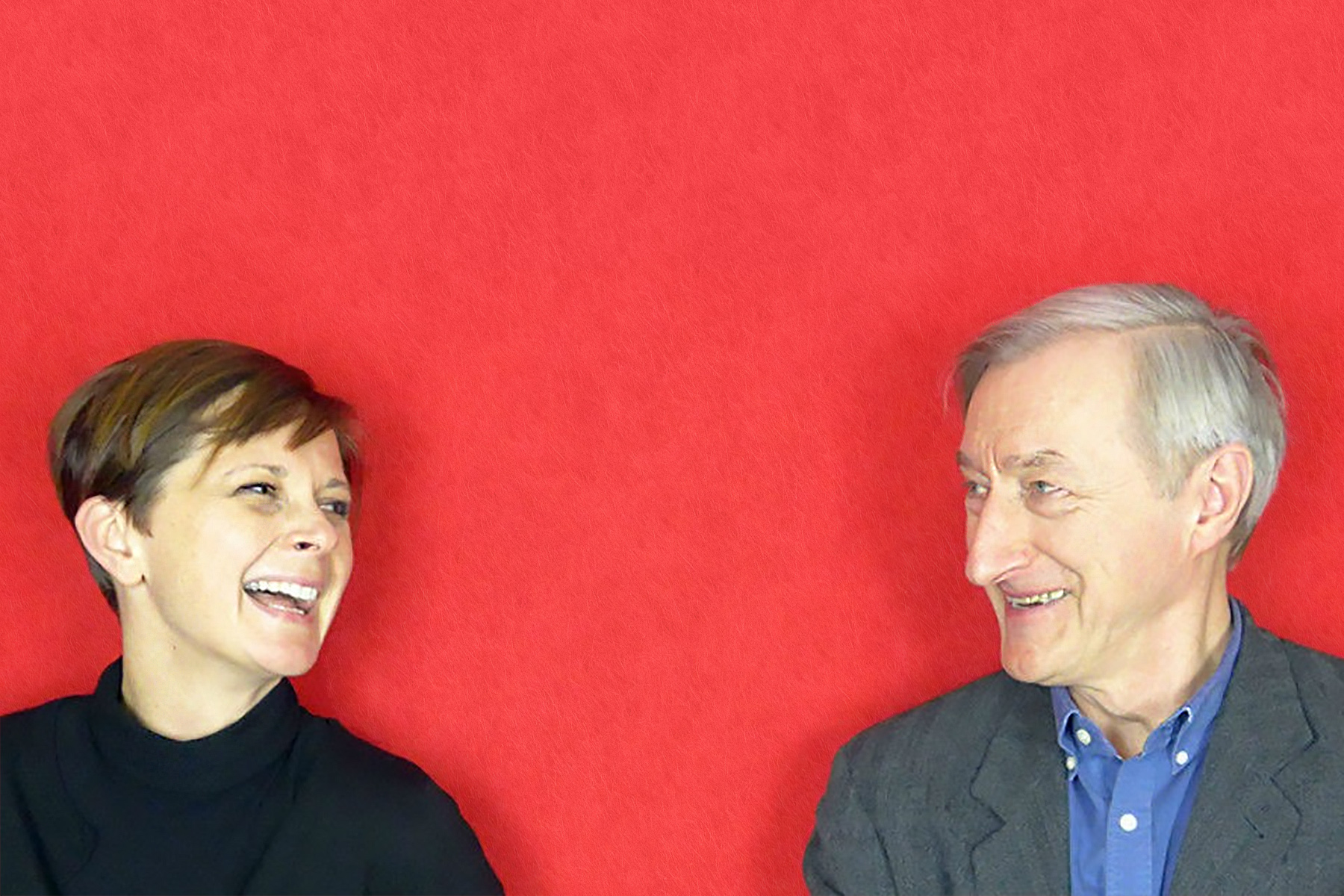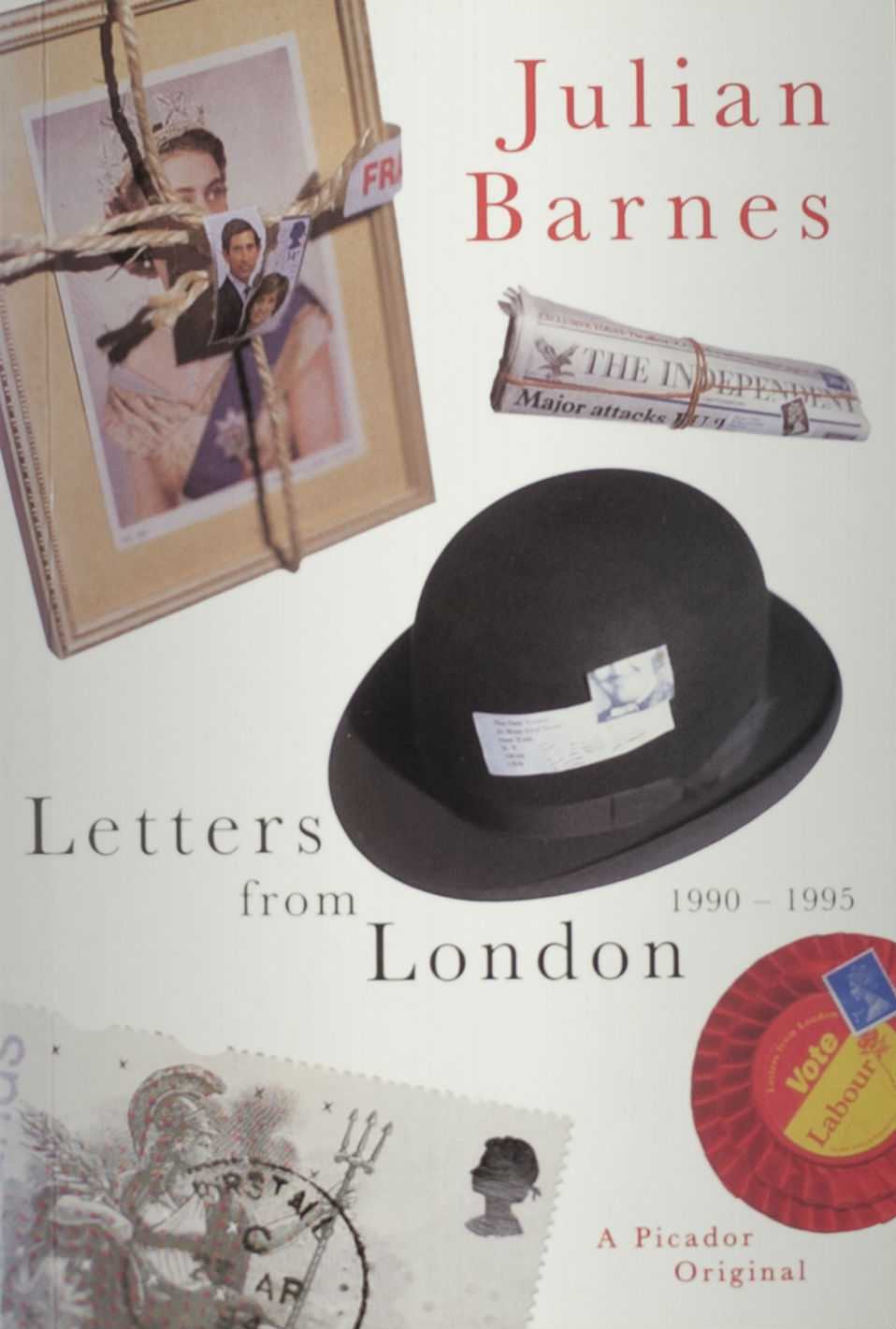- Home |
- Search Results |
- Julian Barnes in conversation with his long-term designer Suzanne Dean
Julian Barnes in conversation with his long-term designer Suzanne Dean
The Booker Prize-winning author of The Sense of an Ending and Elizabeth Finch discusses the cover design of his novels with his designer of 20-plus years.

A new book by Julian Barnes, the author of novels including Flaubert’s Parrot, A History of the World in 10 1/2 Chapters, Arthur & George, and non-fiction such as Levels of Life, is always an event.
Barnes has worked with designer Suzanne Dean, Creative Director of Vintage, for over twenty years, and as you’ll hear in this exclusive interview, the collaboration has been so fruitful he plans never to let her retire.
•
Julian and Suzanne, thank you so much for joining me this afternoon. Before we started you were both laughing together about how long your creative relationship has lasted?
SD: More than twenty years, which is very unusual I think.
JB: And never a bad word.
There must have been some tetchiness at some point?
JB: No, I’m sorry to tell you that we’ve never had a bad word. The only possible dissension, but not with Suzanne, is if I prefer a cover marginally more than the one that my editor wants. And sometimes I get my wish and sometimes I think it’s their job to choose the best cover, I don’t feel that strongly. But the last time I actually rang Suzanne up and said I really can’t decide between these two, but what do you think? And she said, brilliantly, ‘I’m very happy that it’s down to those two.’
How many different variants had you made, Suzanne?
SB: Probably about ten. I show them first to the editor, Dan Franklin, and we get rid of a few that he thinks are absolutely nonsense, and then Julian comes in and it’s always an interesting moment.
JB: Apart from the actual writing it is the most fun part of publishing a book. For a while she used to have an interesting technique; she would lay out the covers and it was always the penultimate one that she wanted. She would put a strong one in first because that would relax me, and I’d know at least we’ve got one really good cover, and then the penultimate one would be the one she wanted. And then about three or four books ago I said, ‘Suzanne, this is the penultimate one. This is the one you want me to like, isn’t it?’
SD: Oh dear, I’m so easily read!
The Noise of Time cover is marvellously wrong-footing because people are going to know that this is a novel about Shostakovich, so you imagine there will be some kind of musical reference. But it’s a man with a suitcase, so you think what could this possibly be?
SD: I loved that moment when I was reading the manuscript, the way his thoughts were sort of dotting around and coming back and just the tension, the thought of that lift and when the lift comes up and it’s a different person than the one he’s expecting. It just seemed absolutely the right choice for the cover, I was adamant about that. I did do lots of other visuals and there were glasses, Russian poster-like covers, blocks to make you feel like he was being pushed in… but I kept coming back to the man and the suitcase and I commissioned this wonderful woodcut and it was just perfect.
There is something so extraordinary about this cover because it’s that image you open the book with: Shostakovich standing by the lift shaft because he does not want to be taken away in the night. It’s such a powerfully resonant, terrifying moment in the book.
JB: Yes and that’s probably the most famous moment in Shostakovich’s life. If you talk to musicians, I was talking to Simon Rattle, and I said I’m writing a novel about Shostakovich and he immediately said, ‘Oh, when he was waiting by the lift, night after night!’ I’d already decided to start with that scene, being the focus of the first third of the book.
SD: It’s just right for the period the book’s set in, the hints of the Soviet with the typography, but also it’s quite modern. It’s an odd balance of the two things at the same time which is quite difficult to pull together.
JB: She was also brilliant in her choice of paper. Each time we work together she sort of lets me in to a few more secrets and more of the process, because I think she’s beginning to trust me. She said ‘I want it to look like cheap brown paper, the sort that you’d wrap something up in a Soviet department store but at the same time be sturdy enough not to get torn.’ And then you sent me three or four different brown papers.
SD: They weren’t hugely different, but you chose the right one.
JB: There you are, I could have been a designer.
Perhaps this is unwitting, but the association between books and brown paper is also that memory of having to cover your schoolbooks with it. There is something booky about brown paper.
SD: Yes and it feels so nice. We did the black and red lettering and the image with foil so it really stands out. If it was printed it would have absorbed into it and lost some of that power. It’s literally called foils; two different foils are printed onto the brown paper. It’s a similar technique to the one used for Arthur & George but instead of cloth it’s brown paper. It just gives it that boldness.

Let us go back in time. Twenty years or so. Tell us about the first book that you worked on.
SD: Letters from London.
JB: Which was a collection of my journalism; I was London Correspondent at the New Yorker for five years. And I’ve always had the rule when I reprint journalism that it should be as an original paperback not as a hardback because I think it’s been paid for once. I think it should be made as widely available as possible first time round. So you knew that you had a flapped paperback.
SD: I hadn’t met Julian before. I read the text and came up with this idea of objects that had been sent through the post that represented different articles. I trudged round London, finding various things like a bowler hat, put stamps on them to make it look like they’d been sent through the post, and photographed them. There were a lot of stages and thankfully Julian approved it.
JB: It was a lot better than the American cover. I think all their images were benignly English, a beefeater, a Devonshire cream tea… but all Suzanne’s images relate exactly to the book.
SD: Which proves I read it.
There is always this issue about collectability and obviously this has changed over the years as there are so many editions of the book. How much does that play a part in how you design things, for posterity and making something last?
SD: I never sit there thinking like that. I will just respond and do the most beautiful job I can. I’m trying to get the most perfect essence of the text each time and I don’t sit there and think this has to stay forever. I hope that the cover for The Noise of Time becomes iconic. The book is so brilliant that it should be that package where it becomes bound up, the image and the text and everything unites.
JB: I remember when I won the Booker Prize and in my speech, I made Suzanne cry because I said she’s the best designer in town. But I also said that it’s increasingly important that the physical book, in order to resist the challenge of the e-book, should be something that makes you want to pick it up, buy it, give it to people.
You work with many writers, who all have an opinion about what they want their book to look like. But Julian has a very visual sense, is very interested in art, has written extensively about it. What’s it like working with someone who’s so practised in thinking about visual images?
SD: What’s so nice about working with Julian is the trust; I think that’s really important. There’s nothing more heartbreaking than producing something and someone can’t understand what you’re trying to show them. I think over time you build up that trust and you know that I’ll be working my very hardest to give you the best cover I possibly can. I really am so desperate to produce perfection each time and I want it to be better each time.
Much like being a novelist. You want each book to be better, don’t you?
JB: Indeed. Actually I’ve just opened Suzanne’s copy of The Sense of an Ending, and my dedication says ‘To Suzanne, is this your best yet? (It is until the next one.)’
I remember another story about The Sense of an Ending cover. I came in for my ritual meeting in which all the covers are laid out, and it was much harder than usual. It seemed to me there were three to four covers which were all very good but none of which roared at me. Suzanne just said, ‘Give me a few days.’
SD: I said, ‘Before you make a decision, I’ve got something brewing, I’ve been thinking and I know there’s something I want to play with in my head. Can you give me a week or two?’ And you said yes sure.
JB: And then she came up with The Sense of an Ending which is iconic, I think we can agree, and it was not like any of the other covers, that was the point. It came from completely left-field, it wasn’t a cleverer version of one of the others; it was just something that worked instantly.
Do you ever have an idea of the cover in your head as you write or come to the end of a book?
JB: No I don’t think I ever have. I think it would distract me from the book if I started thinking about the cover. I think you should never think about anything extraneous. I remember once talking to Malcolm Bradbury and he said he’d written a novel and he’d left a hole in the story because he was going to wait to fill it when the TV adaptation happened. And I thought that sounds remarkably bizarre, and in fact he got very cross because the TV adaptation never did happen. But I thought how strange, to write a novel and already think beyond it to a TV adaptation? I don’t even think as far as the cover. It’s never crossed my mind what the cover might look like, partly because I trust Suzanne so implicitly, but because it wouldn’t help me and it wouldn’t help her.
If you had to choose a favourite, I know you get better every time Suzanne, but what would it be?
JB: My next book.
SD: Can I have that answer too? My next book for Julian will be the best.
Now I’m going to ask you as we close, Julian, I don’t know whether you’re writing another book, but presumably you’re gearing up for the next?
SD: It will come.
JB: I haven’t even started anything so Suzanne is allowed to satisfy other people. But not to work too hard because she knows I’ll be producing another one before too long. And also in conclusion, I do say to her on regular intervals, ‘You’re not allowed to retire until I’ve stopped writing‘, and I mean it!